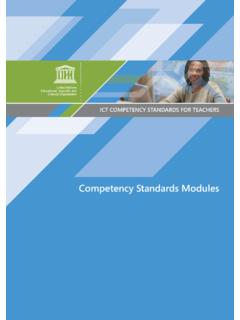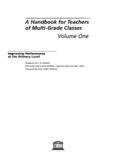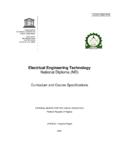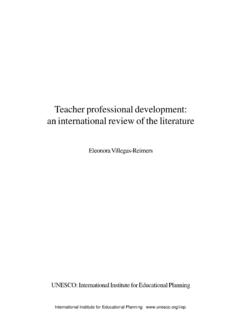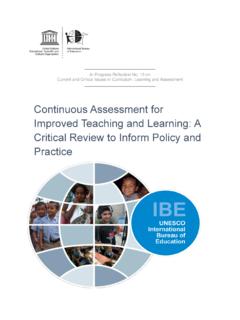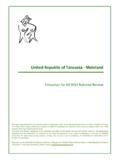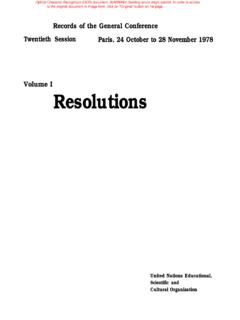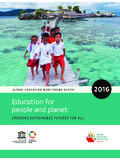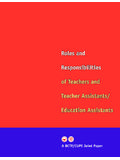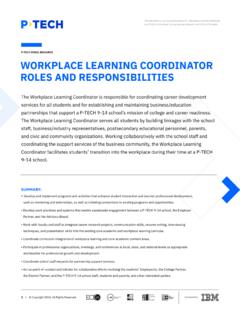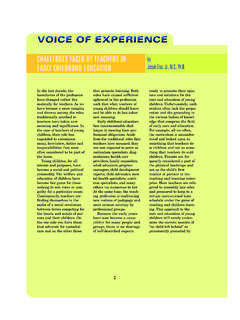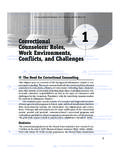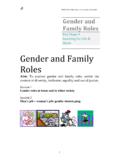Transcription of Principles of awareness-raising for information …
1 Communication aand IInformation ((CI)UNESCO Asia and Pacific Regional Bureau for Education920 Sukhumvit Rd., PrakanongBangkok 10110, ThailandNextRichard SayersAwareness- raising awareness - raising Principles offor information Literacy,a case study iiSayers, RichardPrinciples of awareness - raising : information literacy, a case : UNESCO Bangkok, pages1. information literacy. 2. Public 92-9223-082-4 UNESCO 2006 Published byCCoommmmuunniiccaattiioonn aanndd IInnffoorrmmaattiioonn ((CCII))UNESCO Asia and Pacific Regional Bureau for Education920 Sukhumvit Rd., PrakanongBangkok 10110, ThailandThe designations employed and the presentation of materialthroughout this publication do not imply the expression of anyopinion whatsoever on the part of UNESCO concerning the legalstatus of any country, territory, city or area, or of its authorities orconcerning the delimitation of its frontiers or author is responsible for the choice and the presentation ofthe facts contained in this book and for the opinions expressedtherein, which are not necessarily those of UNESCO and do nocommit the author wishes to thank the following individuals andorganisations for their contributions to this handbook.)
2 Ms Paromita Pain, "The Hindu" newspaper, IndiaMrs Pradeepa Wijetunge, Director, National Institute of Library andInformation Sciences (NILIS), University of Colombo, Sri LankaMr Stephen O'Connor, CEO, CAVAL Collaborative Solutions,AustraliaDr Susanne Ornager, UNESCO, ThailandAcknowledgementsvNextForeword PrefaceviiIntroductionixChapter 1: Introduction to Communication and 1 awareness -RaisingFurther Reading19 Chapter 2: Planning an awareness - raising Campaign21 Further Reading42 Chapter 3: Approaches to awareness -Raising43 Personal Communication47 Mass Communication48 Education50 Public Relations (PR)52 Advocacy53 Further Reading58 Chapter 4: awareness - raising for Special Audiences59 Further Reading65 Chapter 5: information Literacy - Setting the Scene67 Further Reading75 Chapter 6: raising awareness of information Literacy77 Further Reading94 Appendix 1: Communication in Practice - "Pass-it-on"97 Appendix 2: awareness - raising Campaign Plan Template99 Appendix 3: Empowering Eight information Literacy Model101 Glossary103 Index107 ContentsviiNextThis handbook has been written to provide guidelines fordeveloping process of awareness - raising .
3 Theories, Principles andtechniques are offered in this manual based on the experiences ofthose who have developed practices that were successful and thatmet certain expectations. Rather than presenting generalizations,the handbook focuses on one event, the United Nations LiteracyDecade success of Decade depends on the involvement of , school systems, academic and research centres, themass media, private enterprises, social organizations, andeducational, cultural and religious institutions, all have a place anda role to play in this endeavour. UNESCO supports networks ofmany kinds, and awareness - raising is a necessity in determining thekind of networks which must be is a somewhat broad and vague term, yet one that isintuitively widely understood. As part of a permanent andinteractive communication flow, awareness - raising is a processwhich opens opportunities for information exchange in order toimprove mutual understanding and to develop competencies andskills necessary to enable changes in social attitude andbehaviour.
4 To be effective, the process of awareness - raising mustmeet and maintain the mutual needs and interests of the Foreword viiiPreviousFor the successful implementation of the Literacy Decade forLiteracy for All, the principal strategies must be put in place at alllevels through actions that are coordinated and complement eachother. The key areas for action are policy development, programmemodality, capacity-building, research, monitoring and evaluation. Itmust be stressed that all actions must address the gender equalityperspective in all its model of awareness - raising , or campaign planning, should bea tool to stimulate discussions and innovations in the design of theprocess and not a rigid how-to-do recipe. A model can focus onfinding optimal combinations of different approaches. Examples ofsuch approaches or modes are public relations (PR), advocacy,personal communication or educational programs in characteristic of a good campaign is an optimal combination ofelements from the different modes.
5 Each mode has its advantagesand opportunities that can be a unique contribution to the total mixof strategies. However, some processes will deliberately choose tofocus only on one mode because of the organizations' specific skills,target audiences or goals. The objective, through this handbook, is to offer a helping hand toeverybody involved in awareness - raising processes by endowingthem with comprehensive information about what, how and whenissues are to be raised in order to embark successfully on thejourney to raising SShhaaeeffffeerr Director, UNESCO BangkokMarch 2006ixNext" information Literacy, in conjunction with access to essentialinformation and effective use of information andcommunication technologies, plays a leading role in reducingthe inequities within and among countries and peoples, andin promoting tolerance and mutual understanding throughinformation use in multicultural and multilingual contexts.
6 "The Prague Declaration: "Towards an information Literate Society", 20031"Bringing about positive, equitable and sustainablechange is a difficult "Oxfam International Youth Parliament, 20052 This handbook introduces the Principles of public awareness -raisingwith particular emphasis on global efforts to promote awareness ofInformation Literacy is defined by the Association of College andResearch Libraries in the United States as "the set of skills needed tofind, retrieve, analyze, and use information ."3 These skills are1 (accessed 10 March 2006)2 Oxfam International Youth Parliament (2005) Case Study Collection: awareness raising and Behavioural Change, Strawberry Hills, NSW: OxfamAustralia, p. 5, (accessed 12 March 2006)3 (accessed 10 March 2006)IntroductionIntroductionxPreviousvi ewed by many policy makers and educators as critical to thecreation of an equitable global ' information Society' in which bothdeveloped and developing nations can share in social andeconomic handbook has been developed primarily as a resource foradministrators, librarians, teachers, lecturers and communityleaders charged with responsibility for raising public awarenessabout information Literacy.
7 It is hoped that the various approachesand strategies suggested in this publication will serve to stimulatefurther discussion about information Literacy and inspire innovativenew awareness - raising campaigns. The outcomes of thesecampaigns may in turn be shared with others through theInternational information Literacy Resources Directory recentlylaunched by the International Federation of Library Associations andInstitutions (IFLA) and promoting information Literacy to our communities andcountries, we should always remember that to raise publicawareness is to inform community attitudes, behaviours and beliefswith the intention of influencing them public awareness of any issue is not an easy undertakingand achieving lasting behavioural change is harder still. However,as this handbook demonstrates, with a basic understanding ofhuman communication, some knowledge of effective approachesto awareness - raising , and a measure of simple planning, it ispossible to affect positive, equitable and sustainable (accessed 10 March 2006)1 NextChapter 1: Introduction to Communication and awareness -RaisingIn tthis cchapter: Principles of communication Why communication can fail Hearing, seeing and doing Definitions of awareness - raising Social marketing and behavioural change Communication strategies for awareness -raisingIt is generally accepted that to raise public awareness of a topic orissue is to attempt to inform a community's attitudes, behaviours andbeliefs.
8 Furthermore, it is our intention through information toinfluence these attitudes, behaviours and beliefs positively in theachievement of a defined purpose or goal: for example, improvingpublic health or promoting information theory and practice of public awareness - raising has alwaysdrawn heavily on the literature of mass communication and socialor "social change" marketing. Social change marketing refers to thepractice of communicating or selling a 'good idea' with the statedobject of changing community attitudes and actions. Seeking andusing information ( information Literacy) is one such good idea, butother examples include messages about public health andeducation, environmental concerns and social difficulty of selling a good idea should not be underestimated,even where it has the endorsement and support of government orcivil society.
9 Providing information and promoting understanding of2 Previous5 (accessed 16 March 2006)6 John Fiske (1982) Introduction to Communication Studies, London: Methuen, p. 1an issue is relatively easy to achieve with the right strategies andapproaches. It also requires relatively few resources. Changingindividual or community practices however is more difficult to affectand may not always be accomplished simply through awareness - raising . As one social marketing expert has noted, "changingpeople's behaviour has always been the most problematicenterprise in human affairs."5 Behavioural change is still possible toachieve though and chapter three will examine suitable approachesin effective communication forms the basis of all social marketingand public awareness - raising , we will begin by looking at howcommunication operates within communities and of CommunicationCommunication is such a common human activity that we oftenoverlook the complexity of interactions at its core.
10 As one writerobserves, "communication is one of those human activities thateveryone recognizes but few can define satisfactorily."6 Reflect for a moment on what communication and particularlypublic communication means to you and your community. Whatare the most effective means of public communication availableto you and your community? Is it for example 'word of mouth' -one person to another - or the local newspaper? If this is adifficult question to answer, consider how information andknowledge is typically shared within your family, community andsociety. Many societies, particularly in developing countries, rely on the spoken word or graphical images for Tim O'Sullivan et al (1983) Key Concepts in Communication, London:Methuen, p. 428 (accessed 12 March 2006)Communication may be broadly defined as "a negotiation andexchange of meaning, in which messages, people-in-culturesand 'reality' interact so as to enable meaning to be produced orunderstanding to occur.
